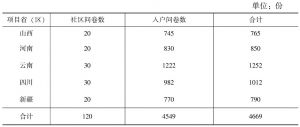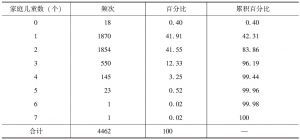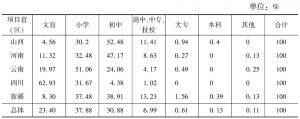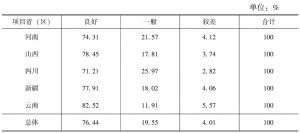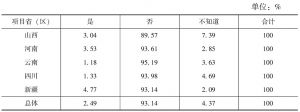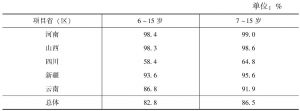章节
中国儿童多维贫困描述统计分析
检索正文关键字
章节目录
- 一 引言
-
二 文献综述
- (一)关于儿童贫困的含义
- 1.联合国儿童基金会的定义
- 2.英国儿童贫困研究与政策中心的定义
- 3.基督教儿童福利基金会的定义
- (二)儿童贫困的主要测量方法
- 1.货币分析法
- 2.剥夺法
- 3.社会排斥法
- 4.福利分析法
- (一)关于儿童贫困的含义
-
三 分析框架与数据说明
- (一)分析框架
- (二)数据说明
-
四 儿童多维贫困分析
- (一)生存
- 1.吃饭
- 2.居住
- 3.主观贫困
- 4.脆弱性
- (二)健康
- 1.健康状况和健康行为
- 2.卫生服务的可及性
- 3.饮用水
- 4.卫生设施
- 5.能源与环境
- (三)保护
- 1.家庭暴力或家长体罚儿童
- 2.校园暴力
- 3.社会上针对儿童的暴力
- 4.其他不安全因素
- (四)发展
- 1.适龄儿童的入学率
- 2.少数儿童感觉上学“非常远”
- 3.体美教育缺失
- 4.家庭和社区教育缺失
- 5.儿童对社区体育设施的向往
- 6.没有户籍的儿童
- (五)参与
- 1.日常生活
- 2.学习
- 3.交友
- 4.业余爱好
- (一)生存
-
五 主要结论和政策建议
- (一)主要结论
- (二)政策建议
相关文献
查看更多>>>












